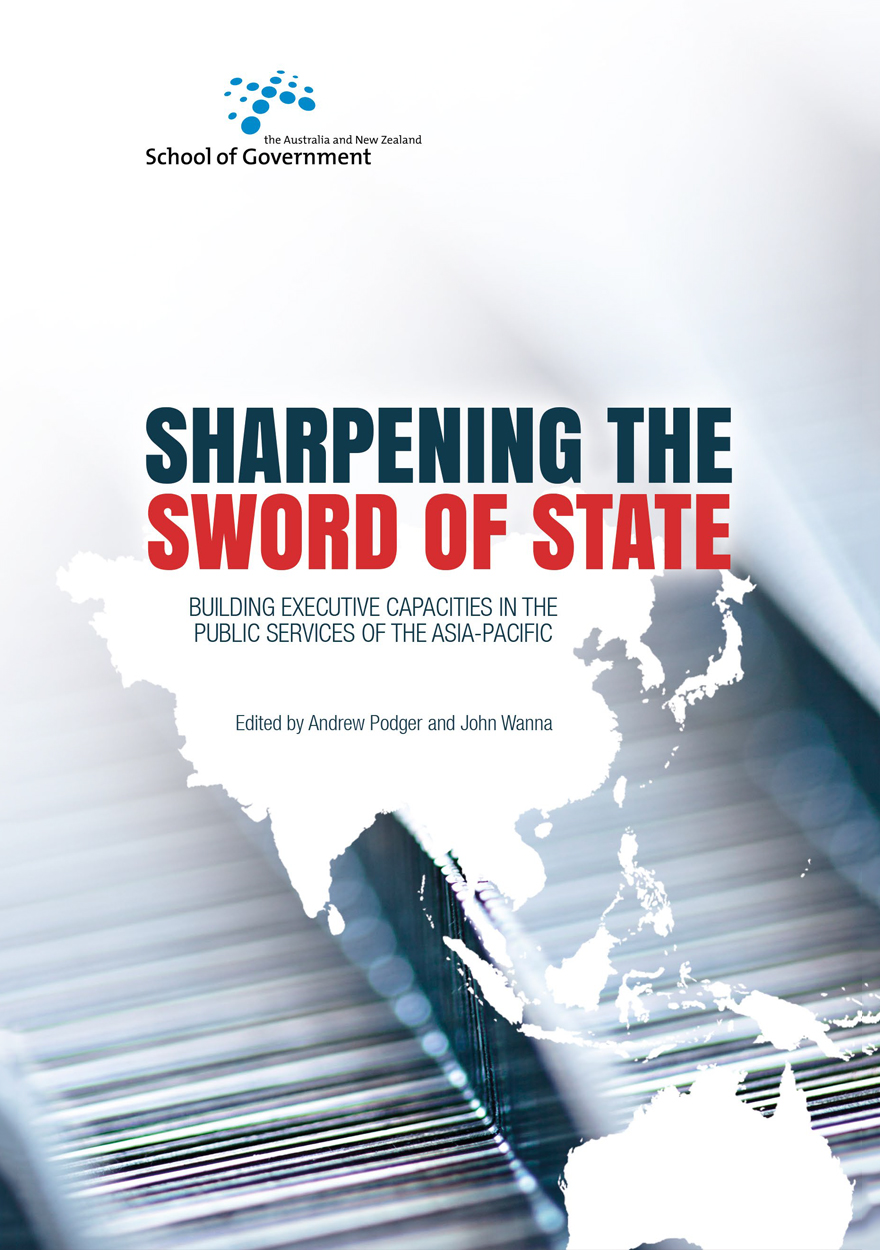Search titles
Displaying results 161 to 170 of 558.

Regulatory Theory »
Foundations and applications
Edited by: Peter Drahos
Publication date: February 2017
This volume introduces readers to regulatory theory. Aimed at practitioners, postgraduate students and those interested in regulation as a cross-cutting theme in the social sciences, Regulatory Theory includes chapters on the social-psychological foundations of regulation as well as theories of regulation such as responsive regulation, smart regulation and nodal governance. It explores the key themes of compliance, legal pluralism, meta-regulation, the rule of law, risk, accountability, globalisation and regulatory capitalism. The environment, crime, health, human rights, investment, migration and tax are among the fields of regulation considered in this ground-breaking book. Each chapter introduces the reader to key concepts and ideas and contains suggestions for further reading. The contributors, who either are or have been connected to the Regulatory Institutions Network (RegNet) at The Australian National University, include John Braithwaite, Valerie Braithwaite, Peter Grabosky, Neil Gunningham, Fiona Haines, Terry Halliday, David Levi-Faur, Christine Parker, Colin Scott and Clifford Shearing.

What if we could reimagine copyright? »
Edited by: Rebecca Giblin, Kimberlee Weatherall
Publication date: January 2017
What if we could start with a blank slate, and write ourselves a brand new copyright system? What if we could design a law, from scratch, unconstrained by existing treaty obligations, business models and questions of political feasibility? Would we opt for radical overhaul, or would we keep our current fundamentals? Which parts of the system would we jettison? Which would we keep? In short, what might a copyright system designed to further the public interest in the current legal and sociological environment actually look like?
Taking this thought experiment as their starting point, the leading international thinkers represented in this collection reconsider copyright’s fundamental questions: the subject matter that should be protected, the ideal scope and duration of those rights, and how it should be enforced. Tackling the biggest challenges affecting the current law, their essays provocatively explore how the law could better secure to creators the fruits of their labours, ensure better outcomes for the world’s more marginalised populations and solve orphan works. And while the result is a collection of impossible ideas, it also tells us much about what copyright could be – and what prescriptive treaty obligations currently force us to give up. The book shows that, reimagined, copyright could serve creators and the broader public far better than it currently does – and exposes intriguing new directions for achievable reform.

Harnessing the Bohemian »
Artists as innovation partners in rural and remote communities
Authored by: Peter Skippington
Publication date: December 2016
Harnessing the Bohemian takes a fresh and interdisciplinary perspective on the intractable problem of shrinking populations and resources in remote/rural communities. It challenges the conventional wisdom of community development theories and practices and envisages more central roles for the creative disciplines in revitalising futures planning.
It argues that the evolution of technologies, the emergence of creative economies, the increasing demand for creative products, and the emergence of new creative talent are continually changing community expectations and opportunities. Consequentially, fresh arguments and new ideas must be developed to stimulate more creative and innovative approaches to community development. Recognising that creativity and innovation exist across all community sectors, this book proposes practical new approaches that harness the creative capital of all community stakeholders.

Australia goes to Washington »
75 years of Australian representation in the United States, 1940–2015
Publication date: December 2016
Since 1940, when an Australian legation was established in Washington DC, Australian governments have expected much from their representatives in the American capital. This book brings together expert analyses of those who have served as heads of mission and of the challenges they have faced. Ranging beyond conventional studies of the Australian–United States relationship, it provides insights into the dynamics between Australian and US policymakers and into the culture of one of Australia’s oldest and most important overseas missions. It provides an appreciation of the importance of the embassy and the head of mission in Washington in mediating the relationship between Australia and the United States and of their role in managing expectations in Canberra and Washington. Australia Goes to Washington also sheds new light on personal trials and achievements at the coalface of Australian–United States relations.

Reading Embraced by Australia »
Hiroshima Modules 1 and 2
Authored by: Carol Hayes, Yuki Itani-Adams
Publication date: December 2016
Hiroshima Modules 1 and 2 provide a first-hand account of surviving Hiroshima's atomic bomb.
This eText is the first volume of an advanced Japanese language comprehension series aimed firstly at improving Japanese language skills, and secondly at introducing readers to a first-hand account of Australia and Japan’s shared WWII and post-WWII history. Made up of two modules, this eText includes audio recordings of the text, movie files of recorded interviews with Teruko Blair and interactive comprehension quiz questions to help readers engage with the Japanese text.
The story is drawn from war bride and Hiroshima survivor Mrs Teruko Blair's 1991 Japanese memoir, Embraced by Australia (『オーストラリアに抱かれて』), published by Asahi TV Press.
Hiroshima Modules 1 and 2 take readers on a journey behind the eyes of then 20-year-old Teruko. Module 1 covers only a few days in Teruko’s life, in the lead up to the bombing, the horrific impact of the bomb and how she and her family just managed to escape the black rain. Module 2 continues on from Module 1, describing how Teruko and her family survived by managing to escape across the Ōta River to a friend’s farm. The story ends with the survival of all four children and both their parents, which is nothing short of miraculous.
Download for free
Not available for purchase

Aboriginal History Journal: Volume 40 »
Edited by: Liz Conor
Publication date: December 2016
In this volume, Katharine Booth and Lisa Ford present the details of a watershed Northern Territory legal decision. Angela Lapham challenges our understanding of the term ‘assimilation’ in her study of Stanley Middleton. Charmaine Robson looks at Australian leprosy control policy in the twentieth century. The ‘entanglements’ of Aboriginal and European people within farming and pastoral industries on Yorke Peninsula (Guuranda), South Australia, are recorded by Belinda Liebelt, Amy Roberts, Clem O’Loughlin and Doug Milera. The positive memories of Aboriginal residents on missions are interrogated by Laura Rademaker. She sifts through their petitions to mission authorities in the 1960s, uncovering the rare instances of Aboriginal voices asserted within the missionary archives. In a collaborative article, Heather Burke, Amy Roberts, Mick Morrison, Vanessa Sullivan and the River Murray and Mallee Aboriginal Corporation (RMMAC) investigate Aboriginal–European early contact on the western Central Murray. Adopting a landscape perspective, they visualise the sociospatial processes of violent engagement that occurred between Aboriginal and European people along the Overland Stock Route. Archibald Meston, Southern Protector of Queensland Aborigines from 1898 to 1904, is brought to life by Judith McKay and Paul Memmott. Meston was the major architect of Queensland’s 1897 Aboriginals Protection and Restriction of the Sale of Opium Act. Meston’s venture as a showman of live Indigenous people, who he publicly paraded as ‘noble savages’, is shown to have shaped his policies and informed this influential legislation. In 1838, French Captain Abel du Petit-Thouars recorded his impressions of Australia. Colin Dyer provides a translation of the captain’s journal, providing a new resource in English for researchers.
Aboriginal History Inc. is a publishing organisation based in the Australian Centre for Indigenous History, Research School of Social Sciences, The Australian National University, Canberra.
For more information on Aboriginal History Inc. please visit aboriginalhistory.org.au.
Download for free
Not available for purchase

Agenda - A Journal of Policy Analysis and Reform: Volume 23, Number 1, 2016 »
Edited by: William Coleman
Publication date: December 2016
Agenda is a refereed, ECONLIT-indexed and RePEc-listed journal of the College of Business and Economics, The Australian National University. Launched in 1994, Agenda provides a forum for debate on public policy, mainly (but not exclusively) in Australia and New Zealand. It deals largely with economic issues but gives space to social and legal policy and also to the moral and philosophical foundations and implications of policy.
Subscribe to the Agenda Alerting service if you wish to be advised on forthcoming or new issues.
Download for free
Not available for purchase

Bridging Australia and Japan: Volume 1 »
The writings of David Sissons, historian and political scientist
Edited by: Arthur Stockwin, Keiko Tamura
Publication date: December 2016
This book represents volume one of the writings of David Sissons, who for most of his career pioneered research on the history of relations between Australia and Japan. Much of what he wrote remained unpublished at the time of his death in 2006, and so the editors have included a selection of his hitherto unpublished work along with some of his published writings. Breaking Japanese Diplomatic Codes, edited by Desmond Ball and Keiko Tamura, was published in 2013 and forms a part of the series that reproduces many of Sissons’ writings. In the current volume, the topics covered are wide. They range from contacts between the two countries as far back as the early 19th century, Japanese pearl divers in northern Australia, Japanese prostitutes in Australia, the wool trade, the notorious ‘trade diversion episode’ of 1936, and a study of the Japan historian James Murdoch.
Sissons was an extraordinarily meticulous researcher, leaving no stone unturned in his search for accuracy and completeness of understanding, and should be considered one of Australia’s major historians. His writings deal with not only diplomatic negotiations and decision-making, but also the lives of ordinary and often nameless people and their engagements with their host society. His warm humanity in recording ordinary people’s lives as well as his balanced examination of historical incidents and issues from both Australian and Japanese perspectives are a hallmark of his scholarship.

Sharpening the Sword of State »
Building executive capacities in the public services of the Asia-Pacific
Edited by: Andrew Podger, John Wanna
Publication date: November 2016
Sharpening the Sword of State explores the various ways in which 10 jurisdictions in the Asia-Pacific enhance their administrative capabilities through training and executive development. It traces how modern governments across this region look to develop their public services and public sector organisations in the face of rapid global change. For many governments there is a delicate balance between the public interest in promoting change and capacity enhancement across the public service, and the temptation to micro-manage agencies and be complacent about challenging the status quo. There is a recognition in the countries studied that training and executive development is a crucial investment in human capital but is also couched in a much wider context of public service recruitment, patterns of entry and retention, promotion, executive appointment and career development. This empirical volume, authored by academics and practitioners, is one of the first to chart these comparative differences and provide fresh perspectives to enable learning from international experiences.

East Asia Forum Quarterly: Volume 8, Number 4, 2016 »
Publication date: November 2016
East Asia Forum Quarterly grew out of East Asia Forum (EAF) online, which has developed a reputation for providing a platform for the best in Asian analysis, research and policy comment on the Asia Pacific region in world affairs. EAFQ aims to provide a further window onto research in the leading research institutes in Asia and to provide expert comment on current developments within the region. The East Asia Forum Quarterly, like East Asia Forum online, is an initiative of the East Asia Forum (EAF) and its host organisation, the East Asian Bureau of Economic Research (EABER) in the Crawford School of Economics and Government in the College of Asia & the Pacific at The Australian National University.
Download for free
Not available for purchase



